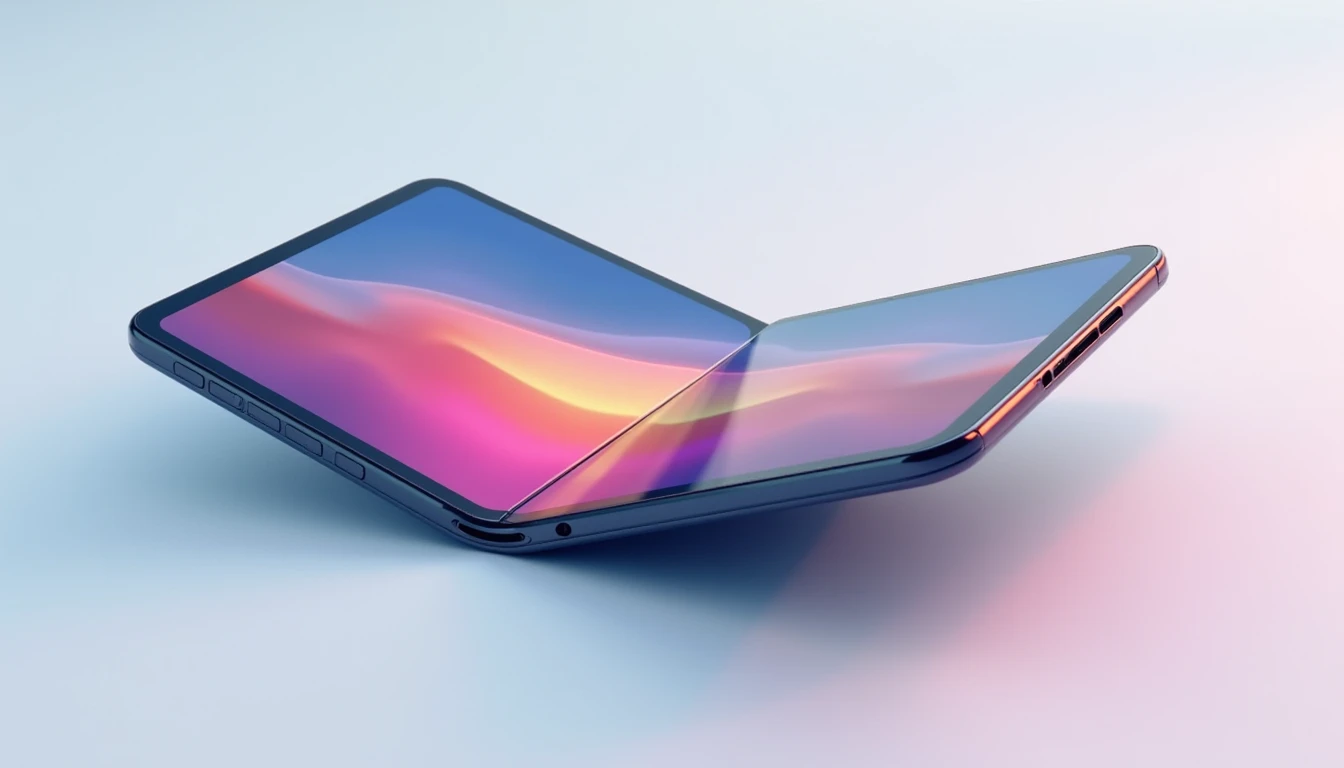The Evolution of Foldable Phones
The concept of foldable phones has been a dream of mobile manufacturers since the dawn of smartphones. Early prototypes date back to the late 2000s, when companies like Samsung and LG experimented with flexible displays. These initial attempts were mostly conceptual, showcasing the potential for devices that could bend or roll. However, the technology was not yet mature enough to be commercially viable.
In 2019, Samsung officially unveiled its Galaxy Fold at Mobile World Congress (MWC), marking a significant milestone in the evolution of foldable phones. This device featured an innovative hinge mechanism and a large internal display that folded out from a compact form factor. The launch was met with both excitement and skepticism, as early reviews highlighted durability issues with the screen. Nonetheless, it set the stage for other manufacturers to explore this emerging market.
Since then, the technology has advanced rapidly. Newer models incorporate improved materials such as ultra-thin glass and more robust hinges that enhance durability while maintaining flexibility. Additionally, companies have begun exploring dual-screen designs, where both sides of the device can be used simultaneously without folding. This not only expands functionality but also opens up new possibilities for software innovation.

The Technology Behind Foldable Phones
At the heart of foldable phones lies a complex interplay between hardware and materials science. The key components include flexible displays, advanced hinges, and durable protective layers that work together to create a seamless user experience. These elements are crucial in ensuring that these devices can withstand daily use while maintaining their aesthetic appeal.
Flexible OLED displays are one of the most critical advancements enabling foldable phones. Unlike traditional LCD panels, OLEDs consist of organic compounds that emit light when an electric current is applied. This allows for thinner and more pliable screens capable of bending without breaking. However, creating a display that can withstand multiple folding cycles remains challenging. Manufacturers must ensure that each pixel performs consistently across the entire surface area while maintaining color accuracy.
The hinge mechanism is another integral part of foldable phone technology. It serves as the pivot point around which the device folds and unfolds. Early designs faced criticism for their bulkiness and potential friction points, which could lead to wear over time. Modern iterations have addressed these issues by incorporating multi-link hinges that distribute pressure evenly across the display. These hinges are precision-engineered from high-grade materials such as aerospace aluminum or titanium alloys, ensuring smooth operation and longevity.
Foldable Phones in Daily Life
Foldable phones offer a unique blend of portability and versatility that can significantly enhance daily life for users. Their ability to transform from compact devices into larger tablets makes them ideal for various tasks, including reading documents, watching videos, playing games, and multitasking between applications. This flexibility allows individuals to tailor their experience based on the context in which they are using the device.
One of the primary advantages of foldable phones is their adaptability in productivity scenarios. For professionals who need to manage multiple windows simultaneously, these devices provide a larger screen real estate without compromising mobility. Imagine drafting emails or spreadsheets while commuting, then unfolding your phone at home for an immersive browsing experience. The ability to transition seamlessly between different modes enhances efficiency and reduces the need for multiple devices.
Moreover, foldable phones have revolutionized entertainment consumption by offering cinematic viewing experiences in a portable form factor. Users can enjoy high-resolution content on larger displays without sacrificing portability. Whether streaming movies during long flights or playing immersive games at home, these devices cater to diverse preferences while maintaining ease of use. Additionally, advancements in camera technology and software optimizations further elevate multimedia capabilities, making foldable phones indispensable for both casual consumers and power users alike.
Challenges and Innovations in Foldable Phone Design
Despite the numerous benefits offered by foldable phones, several challenges remain that manufacturers must address to ensure widespread adoption. One of the most pressing concerns is durability—specifically, how well these devices withstand repeated folding over time. Early models faced criticism for screen tears or hinge failures after only a few months of use. To combat this issue, companies have been investing heavily in research and development aimed at improving materials science.
In addition to physical robustness, software optimization plays a crucial role in maximizing the potential of foldable phones. Unlike traditional smartphones where the user interface (UI) remains static regardless of form factor, foldables require adaptive UIs that dynamically adjust based on whether the device is folded or unfolded. This necessitates collaboration between hardware engineers and software developers to create cohesive experiences across different modes seamlessly.
Furthermore, there exists a need for innovation in battery technology as well. Foldable phones often come with larger batteries due to increased power consumption from more complex components like flexible displays and advanced hinges. However, integrating such large capacity cells within limited space presents its own set of engineering hurdles. Solutions involving thinner yet higher-capacity batteries or innovative charging solutions are being explored to address this challenge effectively.
Market Adoption and Consumer Perception
The adoption rate for foldable phones has been slower compared to traditional smartphones, primarily due to their premium pricing and perceived fragility. Despite rapid advancements in technology, many consumers remain hesitant about investing in these devices given potential risks associated with durability issues or high costs. As a result, manufacturers face the dual challenge of both educating users on proper usage techniques and convincing them that foldable phones are worth the investment.
However, market trends indicate growing interest among tech enthusiasts who value cutting-edge design coupled with enhanced functionality. Early adopters have praised these devices for their ability to blend portability with expanded usability seamlessly. Furthermore, as more brands enter this space—ranging from established giants like Samsung and Huawei to newcomers such as Motorola—competition drives continuous improvements in both hardware performance and affordability.
Consumer perception will continue evolving alongside technological advancements within the foldable phone segment. Improved durability through better materials science coupled with refined software experiences promises greater acceptance among broader audiences over time. Additionally, innovative marketing strategies aimed at highlighting practical applications beyond novelty factor could accelerate uptake significantly moving forward.




